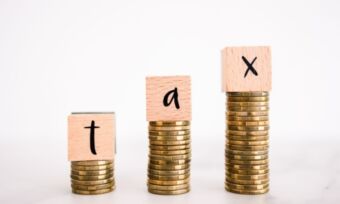An overview of capital gains tax for SMSFs

If you’re the trustee of a self-managed super fund (SMSF), it’s important to understand how your fund’s returns may be affected by capital gains tax. Here’s an overview of how it works.
SMSF trustees can generate returns for their fund by buying and selling investment assets with the money in it. However, with this power comes a number of key risks and responsibilities, including the need to comply with a wide range of super and tax laws.
When it comes to capital gains tax (CGT) obligations specifically, the Australian Taxation Office (ATO) explains that any “net capital gains” an SMSF makes from selling certain assets may attract CGT.
The ATO points out that the actual tax liability of an SMSF will depend on a number of factors, however, so let’s go over some of the situations in which an SMSF will be liable to pay CGT, and how much tax it may need to pay.
What is a capital gain?
Broadly speaking, the ATO says, you make a capital gain if you end up with a profit after selling an asset.
For example, if you bought an investment property for $300,000 and sold it a few years later for $400,000, you would have made a capital gain of around $100,000 – although you’d need to take into account other factors such as buying and selling costs and possible CGT discounts to work out an exact figure.
On the other hand, if you sell an asset for less than it cost you to buy, according to the ATO you would most likely have made a capital loss.
If you buy and sell assets outside of an SMSF as an individual using your own money, the ATO requires that you report your capital gains and losses in your individual income tax return and pay tax at your marginal income tax rate – CGT is not a separate tax or special rate. Likewise, the ATO points out that SMSFs must also include capital gains and losses as part of their assessable income on their tax return. That said, there are some special rules around how CGT works for SMSFs, as we explore below.
How much capital gains tax do SMSFs have to pay?
The general rule
According to the ATO, the income of an SMSF – including income from capital gains – is generally taxed at a concessional rate of 15% while the SMSF is in the accumulation phase.
Any capital gains and losses an SMSF makes during a financial year will be included in the fund’s assessable income, so if its gains are more than its losses, it will normally have to pay CGT of 15% on the excess.
There are some cases, however, where an SMSF may pay a higher or lower CGT rate than this.
Non-complying funds
The ATO warns that ‘non-complying’ SMSFs – those that fail to meet their legal obligations – are not eligible for concessional tax treatment, so they will have to pay a much higher tax rate on all their assessable income, including from capital gains. The ATO says this higher rate will be the highest marginal tax rate, which at the time of writing is 45%.
There may also be other penalties or consequences for non-compliance.
The one-third discount rule
If an SMSF sells an asset it has owned for at least 12 months, the ATO indicates the fund may be entitled to ‘discount’ the capital gain by one-third, so only two-thirds of the gain would be subject to tax. This means an SMSF would pay an effective tax rate of 10% (15% minus the one-third discount) on capital gains where the discounting rule applies.
CGT exemptions for SMSFs
In addition to the one-third discount rule, an SMSF may qualify for further tax concessions or exemptions, depending on its members’ circumstances. If any members of an SMSF have entered the retirement phase (i.e. the SMSF has started paying them a retirement income stream), then the SMSF may pay even less CGT according to the ATO.
This is because SMSFs in this phase can claim an exemption for income generated by assets used to pay a superannuation income stream. The ATO calls such income ‘exempt current pension income’ or ECPI.
The ATO says that if an eligible SMSF trustee takes the necessary steps to claim this exemption, it can take the tax rate on those assets – including CGT – to nil.
If all the members of an SMSF are in the retirement phase (i.e. none remain in the accumulation phase) this could mean the fund is eligible to pay no CGT, regardless of how long it has owned any of the assets it sells.
Keep in mind, though, that if some of the SMSF members are still in the accumulation phase, or if a member holds both an accumulation account and a pension account, the ATO suggests the tax treatment of capital gains can be a little more complicated and the fund may need to pay some CGT. For more detailed information, you can visit the ATO’s page ECPI.
Closing thoughts
If you’re an SMSF trustee considering whether to sell an asset for a capital gain, then it could be worth considering the rules around these concessions and exemptions carefully, as they could affect whether the fund will pay tax on the gain, and at what rate.
As a member of an SMSF, you may also want to consider the transfer balance cap and whether the sale of an asset, and any resulting capital gains, might take you over the upper limit on how much you can hold within your retirement phase super account without a tax penalty.
The interaction between CGT and SMSFs is a highly complex area of Australia’s super system. To help ensure your fund is fully compliant, it’s important to consider getting professional legal and tax advice on navigating the applicable laws and how they might apply to an SMSF, its trustees and its members.
This article was originally written by James Hurwood.
View all Canstar rated Online Share Trading products. View Disclosures.
Image source: Watchara Ritjan/Shutterstock.com
This article was reviewed by our Sub Editor Jacqueline Belesky before it was updated, as part of our fact-checking process.

Try our Superannuation comparison tool to instantly compare Canstar expert rated options.







